Hunger in Gaza: Famine findings a ‘dark mark’ on the world, says WFP Palestine Country Director
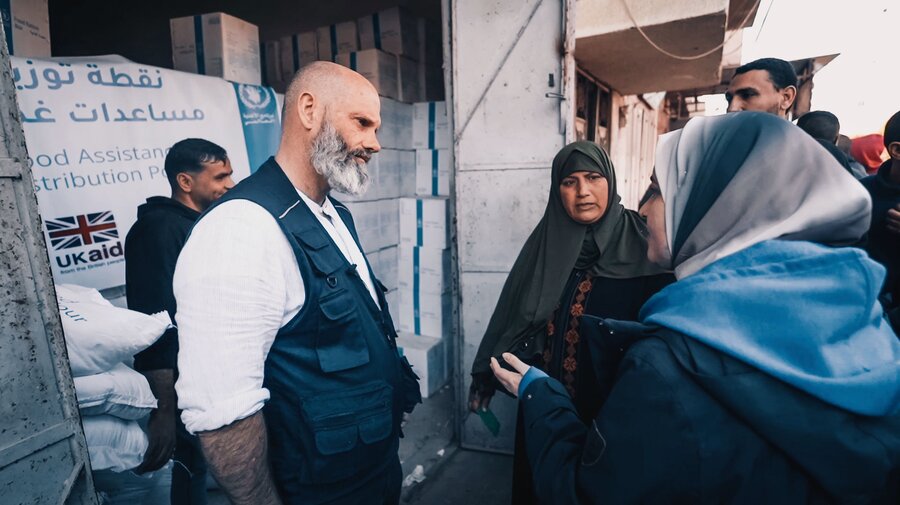
Children crying out from hunger and dying of malnutrition. People risking gunfire to reach aid convoys, and surviving on animal fodder and soup made from leaves and grass. Levels of hopelessness and food insecurity that could turn a humanitarian catastrophe into something much worse.
These are the images behind the horrific hunger numbers published today, showing 300,000 people in Gaza's northern governorates face famine in the coming weeks—snapshots of desperation Matthew Hollingworth, World Food Programme (WFP) Country Director ad interim for Palestine, has seen daily during his visit of the conflict-torn strip.
“Famine is a reality,” says Hollingworth, of the expert analysis known as Integrated Food Security Phase Classification (IPC) for acute food insecurity. It finds 1.1 million Gazans are now experiencing catastrophic hunger—the highest level of food insecurity—a number that has doubled in just three months.
“We’re seeing the highest hunger level of anywhere else in the world in terms of total numbers,” Hollingworth says. “It’s all manmade. It’s shocking how bad things have gotten so quickly , because WFP and other humanitarians can’t reach starving people. It’s a dark mark on the world’s inability to stop this from happening.“
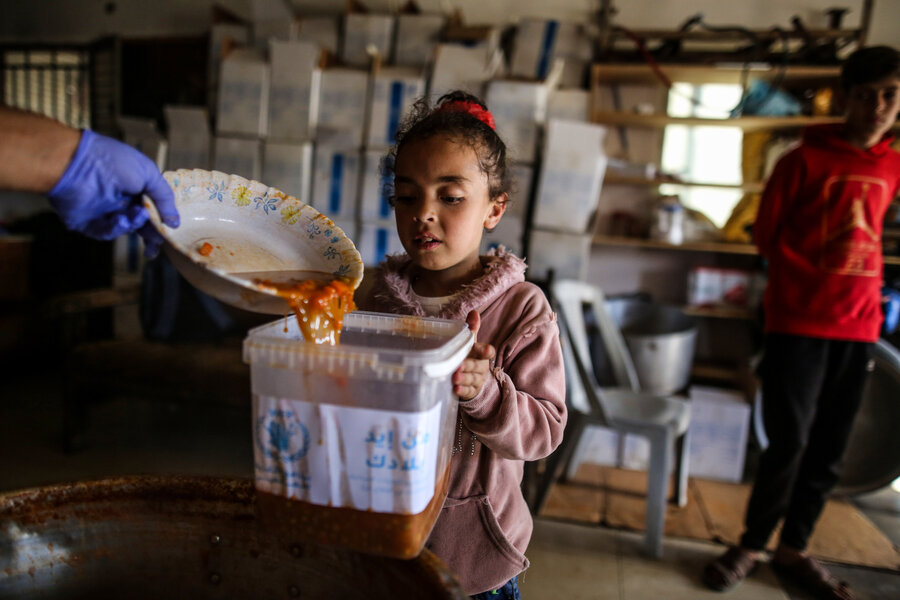
Almost three-quarters of people experiencing catastrophic hunger are in northern Gaza Strip, where humanitarian access has been severely restricted. The IPC findings project famine will arrive there between now and May.
But pockets of famine-like conditions exist elsewhere, Hollingworth says—and risk growing rapidly without a ceasefire and quick, massive amounts of humanitarian aid.
Ceasefire needed
“For a lot of people, it’s already too late,” says Hollingworth. “It’s too late when mothers try to stop the cries of their hungry children, when people are reduced to eating animal fodder, and when we hear reports of children dying of malnutrition-related illnesses.”
A U-turn is still possible, he and other humanitarians say. If a ceasefire takes hold, allowing humanitarian staff and supplies to move freely—and Gazans to access assistance safely—WFP, for one, can scale up rapidly to supply enough food for more than a million of the hungriest people a month.
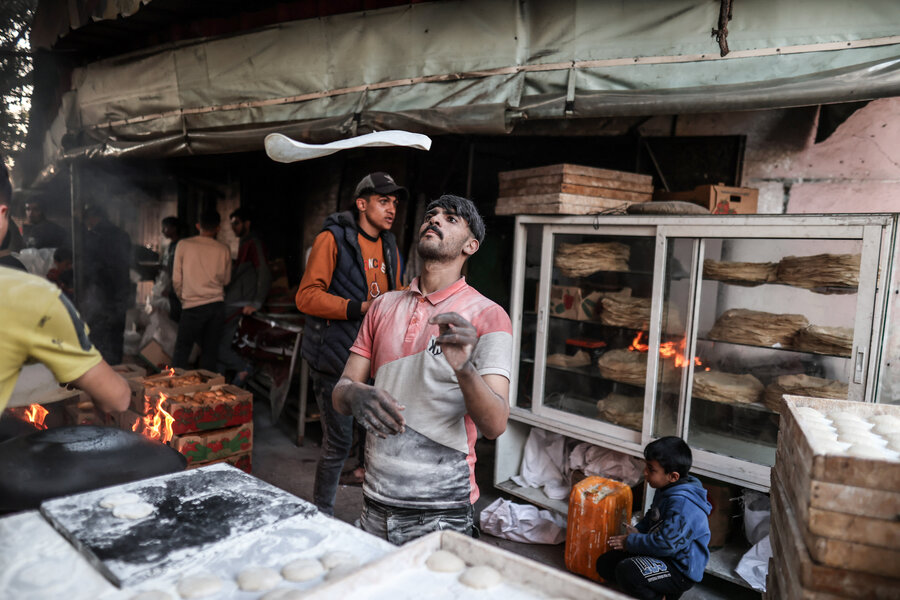
“It’s not too late to prevent more suffering,” Hollingworth says. “A ceasefire is an absolute requirement. Without it more people will die — as a direct consequence of the violence, but also because of the direct attack on people’s health, well-being and ability to cope.”
Even a brief pause in fighting last November, for example, allowed WFP and partners to double distribution points and bring in four times more aid than we would have in an average week of conflict.
“We need to get the entire world behind the fact these IPC results are so heinous, so shocking,” Hollingworth says. “We need to get the parties to this conflict and the international community to believe that it’s doable to avert this — and to enable us to do so.”
Despite hopes of a ceasefire, at best 200 trucks with humanitarian supplies arrive daily in the Strip—when at least 300 are required. Long lines of vehicles remain backed up at the two Gaza border crossings, Rafah and Kerem Shalom, that remain open. While airdrops, and now the first maritime shipment, have delivered lifesaving food, the hunger crisis dwarfs their capacity.
Yesterday, a convoy of 18 WFP trucks transported about 270 tons of wheat flour and canned food to Gaza City. While this delivery marks progress, it falls far short of meeting the needs of the enclave’s population. Indeed, it will only sustain them for a few days at best.

“It’s frustrating. We need a tsunami of aid, not a trickle,” Hollingworth says. “But at this point any effort to bring in more assistance is welcome. Because the level of need is so great, we need approvals to provide massive and nonstop deliveries.”
Hollingworth spoke from Gaza’s southern city of Rafah, where he has been overseeing operations for over a week. He has been sharing a room and bare-bones facilities with WFP’s Gaza staff who—like the rest of the population—have lost homes, relatives and friends.
“They’re worried about their kids, their parents and neighbors who may be trapped in some areas,” he says. “And every day, they’re part of this humanitarian response. It’s remarkable.”
Risk of bigger fallout
A veteran of hunger emergencies, including in Ukraine, South Sudan and Syria, Hollingworth is no stranger to suffering. It is everywhere in Gaza — where hundreds of thousands of people have endured a winter of rain, cold and bombs crowded in squalid tent camps.
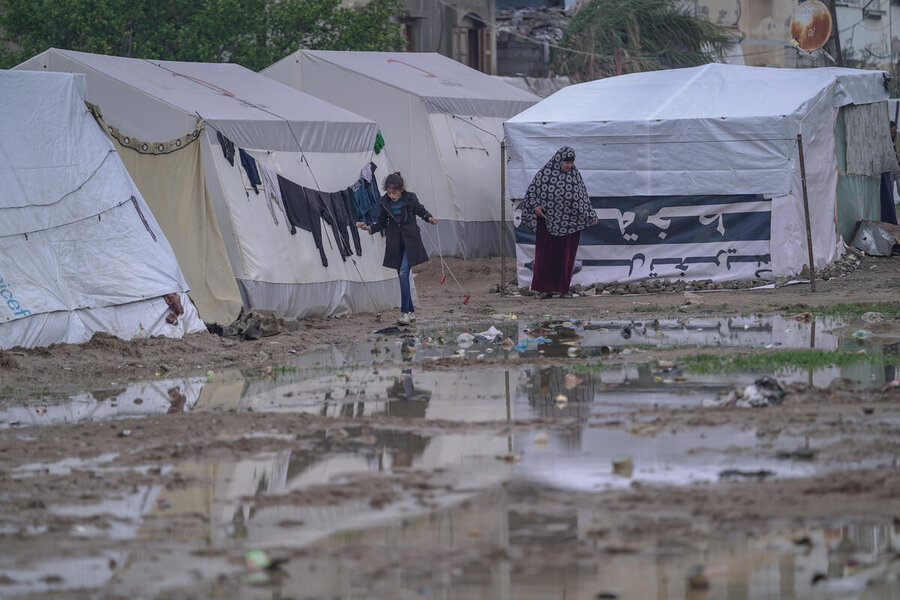
“Laughter is not something you hear in Gaza these days,” he says. “You hear shellfire and mortar fire, rocket fire and small arms fire. You hear people crying. You see them crying.
“It’s such a small place and people are stuck here,” Hollingworth adds. “They feel the world isn’t responding, that the world doesn’t care.”
The United Nations warns Gaza’s humanitarian crisis risks worsening if Israeli ground forces move into Rafah and compel displaced people to flee again— or put those who stay in further peril.
It also means more people will face imminent famine, Hollingworth says. “It will shatter our current, albeit meagre, ability to bring in food aid and other assistance through the only corridors we currently have,” he adds.
Hollingworth has seen some Gazans find courage and strength from what many describe as the worst humanitarian crisis in decades. But desperation is on the rise. Recent weeks have seen Gazans risking violence in their search for food and other assistance. Lawlessness is mounting.
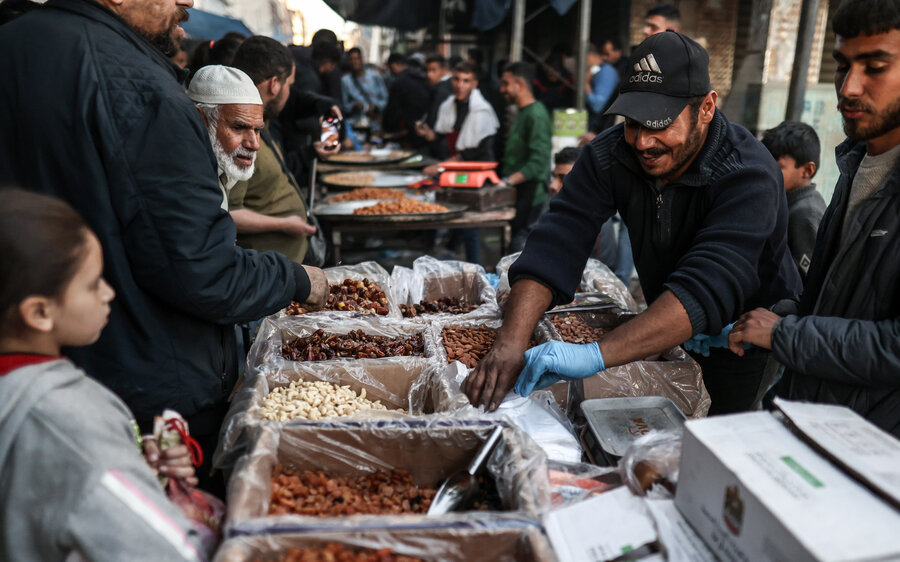
In dire situations, “hope is the last thing to go, and that's the kind of situation that people are facing now,” Hollingworth says. “It can lead to people being defeated, giving up and dying. And it can certainly make people believe there is nothing else left to lose.”
The nearby West Bank is feeling the fallout of Gaza’s war, with anger, violence and hunger on the rise. Hollingworth points to past crises — in Syria, Afghanistan, Sudan or Somalia, for example — where the same toxic ingredients helped fuel regional instability.
“There's a moral requirement for us to do something, when we see so many innocent people suffering,” he says. “You've got to believe that by shouting on their behalf that somebody will hear and take action.”
